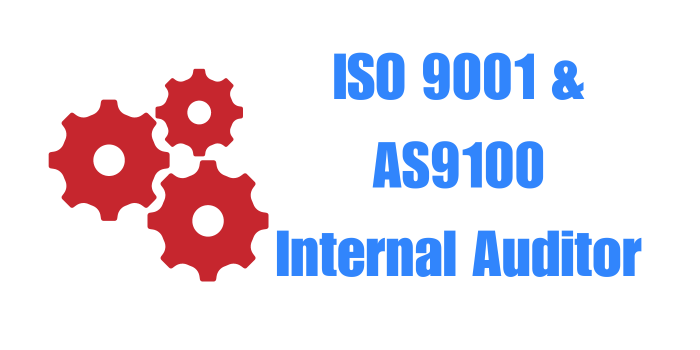2-Day AS9100:2016 Rev D & ISO 9001
Days: 2 • CEU Hrs: 1.9
Time: 7:30 a.m.- 4:30 p.m. MST
Audience: Beginner to Advanced
ISO 9001 & AS9100 Internal Auditor Training Overview
This course prepares you to perform internal QMS audits using industry-proven techniques and to apply proper interpretation of the ISO standard to real life audit situations. You’ll follow the full audit process including: audit tools and preparation, opening meetings, audit interviews, closing meetings, and reporting. This is a very practical class that is not “bogged-down” with academic discussions of quality topics that have limited utility for class attendees.
This Internal Audit class makes extensive use of activities and case studies to help you fully understand the requirements of quality system auditing to the AS9100:2016 standard. Since people “lock” new understanding into long-term memory much better when they apply it, lecture time is held to a minimum providing you time to grasp and then practice your newly acquired skills in simulated real-life audit situations.
Who Should Attend?Individuals who will perform audits to the AS9100:2016 or ISO 9001:2015 Standards or Quality Management Systems, individuals assisting their organizations toward AS9100:2016 registration, or individuals who are frequently audited should attend this training. Quality directors, managers, engineers, auditors, ISO coordinators, laboratory quality professionals, and anyone engaged in quality audits will benefit from this training. |
 |
Prerequisites
There are no required prerequisites. This course is routinely taught to quality novices and life-time professionals. All attendees are required to bring their own copy of the AS9100:2016 Quality Management Standard Requirements to this training course. These will not be provided for you. We strongly advise you bring a “paper” copy.
ISO 9001 & AS9100 Internal Auditor Training Objectives
- Prepared to conduct a solo internal audit at successful course completion
- Fully understand and interpret the AS9100:2016 requirements.
- Apply the proper interpretation of the standard in actual audit situations.
- Understand process auditing tools leading to substantive quality system improvements
- Tailor an audit interview based on the requirements of the standard and obtain audit evidence from this interview.
- Follow-up and resolve “audit trails that present themselves during the audit interviews
- Conduct audits that result in real improvements to the quality system
- Plan and execute the entire audit process including: audit preparation, opening meetings, auditing, closing meetings, and reporting.
Agenda
DAY 1
Part 1: Introductions and Self-Assessment
- Course requirements
- How to get the most from this experience
- Networking with classmates (industry professionals)
- Self-assessment of audit skills and internal audit programs Exercise #1
Part 2: Quality Terminology and Definitions
- Quality industry vernacular from AS9100:2009, ISO 19011
- Differentiating between Verification and Validation
- Understanding Corrective Actions and Risk Management
- How to converse with external auditors
- Terminology Exercise #2
Part 3: Requirements of AS9100:2009
- Demystifying the AS9100:2016 Rev D standard
- Interpreting and cross-referencing the quality standard
- Analyzing audit findings
- Audit exercises for the application of AS9100:2016 Rev D to quality events
- Audit Case Studies
Part 4: The Audit Process: Roles and Duties
- Roles of Auditors, Auditees, and Management during Internal Audits (IAs)
- Qualifying Auditors
- Duties of the IA staff
- Exercise #8: Preparing to be audited
DAY 2
Part 5: The Audit Process: Performing the Audit Process
- Audit Tools – checklists, process maps, findings, reports
- Conducting Audit Interviews Exercise #9
- Exercise #10 Quality event case studies
Part 6: The Audit Process: Audit Skills and Techniques
- Audit Interviewing techniques
- Continual improvement techniques
- Process Auditing methods
- Developing a “continual improvement” attitude in the organization
- Exercise #11 Writing Audit Findings
- Exercise #12 Evaluating the effectiveness of Audits
- Exercise #13 Application of Process Auditing techniques
Part 7: The Audit Process: Finalizing the Audit
- Writing the audit report
- Opening and Closing Meetings
- Exercise #14 Writing and audit report
- Exercise #15 Writing Non-Conforming Reports
- Exercise #16 Conducting a Closing Meeting
Review and Examination of Certificate
 Location
Location
 Register
Register Login
Login
